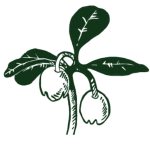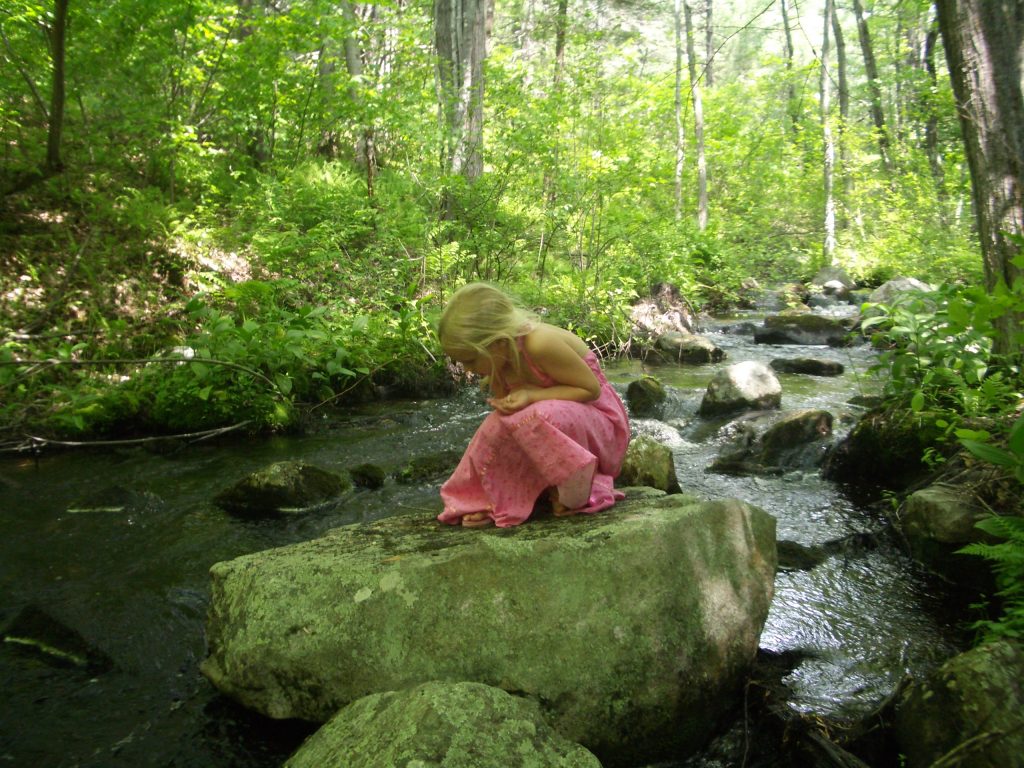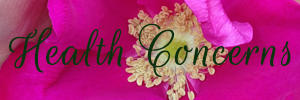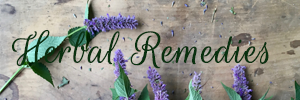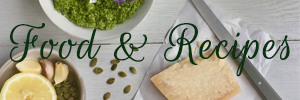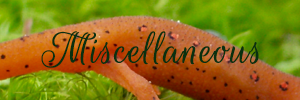(Note: This blog post has been reprinted from an article I wrote in 2008 for Herb Quarterly magazine — some information about the people I interviewed, their current offerings, and book publishing dates might be slightly out of date.)
Our nation’s children rarely spend any time outside — let alone learning about useful and medicinal herbs. However, it need not be this way. With just a little inspiration, parents, grandparents, teachers, and program directors can lead children back out into the gardens, forests and meadows. You don’t have to be an experienced herbalist to take on these projects—together adults and children alike will awaken their senses and appreciation for the healing plants around them.
“Children shouldn’t miss out on (herbal activities),” says Nancy Phillips, author of The Herbalist’s Way (Chelsea Green, 2005) who runs the Nature and Spirit Camp in northern New Hampshire. “In many cultures, even today, this is just a part of their lives and it really isn’t for our modern American kids. I feel it’s my calling to make sure kids know how to connect with nature and add that richness to life, especially with the healing plants.”
Even simple, short activities enrich children’s lives, provide a sense of peace, and empower them to handle many simple health concerns with nature’s bounty.
“There’s just nothing that replaces nature and being outside,” says Lesley Tierra, Santa Cruz, California-based herbalist and author of A Kid’s Herb Book (RDR Publishing, 2000). “It touches a basic element of who we are within the context of where we live, and that we’re part of a greater whole.”
Make sure to discuss poisonous plants with children, says Brigitte Mars, the herbalist and author who co-runs the Herb Camp for Kids (currently on hiatus) with her daughter in Boulder, Colorado. Focus on safe, edible plants during activities, but let them know that not all plants are safe to eat or touch. You may want to show them plants like poison ivy and digitalis to impress the point, or simply tell them not to eat anything without first checking with an adult.
Phillips generally avoids alcohol-based remedies for children’s activities and ensures that anything she makes with the kids is safe even if they drink the whole bottle. Most herbal activities can be done with children aged five and up. Stick to simple, short activities for younger kids.
Herbal Exploration & Activities
Herbal Scavenger Hunt ~ Make a list of five to ten herbs and plant parts (acorns, peppermint leaves, pine needles or pine cones, red clover, plantain, dandelion…). Provide pictures, photos, or samples of each item. Let the children search and see how many they can find.
See Without Seeing ~ Blindfold the children or have them close their eyes. Sit in a circle and pass around different herbs. Have them describe the herb, prompt them with questions. How does this herb smell? Rub the leaves, smell again. Take a nibble—how does it taste? Does it remind them of any foods they know? How does the herb feel against the skin? Smooth? Rough? Furry? Imagine how it would feel as medicine—do you think it would lift your mood? Help with a cold? Etc. Then they can open their eyes and meet the herbs and learn a little information about them. Focus on just a few herbs such as the mints, lemon balm, anise hyssop, lavender, chamomile, rosemary, wood sorrel, licorice root, fennel seeds, or rose petals. Once children have learned herbs, you can do the activity to see if they can guess what an herb is without seeing it.
Harvest A Salad with Flowers ~ Let the children harvest lettuce, arugula, baby spinach, borage flowers, calendula flowers, rose petals and nasturtium flowers from the garden. They may add wild clover flowers and leaves of lamb’s quarters, dandelion and pigweed to the salad. If they’ve made an herbal vinegar, they can use that in the dressing.
Theme Gardening ~ Get children involved with gardening over the course of a summer. Choose a small plot and a theme that interests them. For example pizza (tomatoes, basil, peppers, parsley) or scent (lavender, lemon balm, mint, thyme varieties). Sharon Lovejoy’s whimsically illustrated Roots, Shoots, Buckets and Boots (Workman Publishing, 1999) is full of tips.
Explore the Edible Forest ~ If you had to live in the woods, what could you eat? The plants will vary region to region, but some of our wild edibles include nettle (once cooked or dried), wintergreen leaves and berries, blueberries, raspberries, tea from pine, spruce or fir needles, fiddleheads, dandelion leaves, clover flowers, hazelnuts…. Make sure the kids know not to eat anything without first checking with an adult to make sure it’s edible!
Make a Sun Tea ~ Harvest fresh herbs from the garden and put several handfuls of the herbs into a quart mason jar, cover with hot water, add honey, fresh lemons or other fruits, and let sit in the sun for at least one hour. (Dried herbs, approximately 3 tablespoons or 4 teabags, can be substituted for fresh ones.) Strain into glasses over ice and enjoy! This works well with mint, lemon balm, lemon thyme, tarragon, anise-hyssop, chamomile, rose petals, fennel, and/or licorice.
The Art of Tea Blending ~ Purchase dried loose herbs or let the kids harvest their own (put branches in a paper bag in a warm, sunny car for two days, then pull dried leaves and flowers off the stem). Put out a few bowls of dried herbs and let the children smell and nibble them, then choose a few to make their own tea. Blend the herbs in a mortar and grind with a pestle. Spoon into Press & Brew teabags or reusable muslin bags and store in glass jars or plastic bags. Label the tea with the child’s name, the chosen name for the tea blend, and ingredients. Tasty, interesting herbs include cinnamon, ginger, rosehips, rose petals, chamomile, mints, nettle, lemon balm, licorice, anise hyssop, and fennel seeds.
Herbal Honey ~ You know the saying about “a spoonful of sugar.” Choose fresh leaves and flowers or fresh or dried roots, seeds, and bark. Per 1/2 cup of herb, add 2 cups of honey and bring to a gentle boil on the stove. Once it begins to boil, turn it off and let cool. Repeat one to five more times until the desired flavor is reached. After the last warming, strain the honey into a glass jar and store in the cupboard. Great by the spoonful, added to tea or carbonated water. (Caution: Children under 2 should not be given honey.) Ginger root, cinnamon, mint, basil, anise-hyssop, pine needles, bee balm, lemon balm, and many other herbs make delicious honeys.
Herbal Soda ~ Simmer roots, seeds, and barks or steep flowers and leaves for 15-30 minutes. Strain and stir in sugar, agave nectar, honey, or maple syrup to taste. Let cool (or add ice) and pour in carbonated water. This works well with cinnamon, anise, star-anise, anise hyssop, mint, lemony herbs (lemon balm, verbena, grass & thyme), and ginger. (More tips on flavor combos for sun tea, soda, and infused water in this HerbRally blog post… obviously skip the cocktails with kiddos, though!)
Herb-Infused Oil & Salves ~ Use a mason jar, olive oil, and fresh, wilted, or dry herbs to make healing oils for topical use. St. John’s wort makes a lovely bright red oil; use freshly picked buds and flowers. Use plantain, chickweed or cleaver leaves wilted to half their weight. Or, freshly dried calendula or lemon balm. Put the herb in a mason jar, cover with olive oil, and leave in a sunny spot for two weeks. Strain and use as is or make it into a salve. Melt in 1 oz crushed beeswax per 4 oz of oil in a double boiler and pour it into jars before it re-hardens. (More directions and videos on my blog here.)
Herbal Vinegar ~ Place 1 cup of fresh, chopped garden herbs in a pint jar and cover with apple cider or distilled white vinegar. Let sit for two to four weeks, strain, and use for marinades, salad dressings or as a non-alcoholic “tincture” for medicine. Good culinary herbs for vinegar include chives, chive blossoms, garlic, onions, hot peppers, rosemary, tarragon, lemon thyme and basil.
Nature Wreathes ~ Use twisted fresh grape vines or young tree branches to create a basic wreath. Let the children attach fresh or dried herbs, leaves, evergreen branches, pine cones, and/or flowers to their wreathes with wire or glue.
Herbal Window Picture ~ Have each child carefully choose the most beautiful leaves or flowers from the wild or garden. Let them arrange the plants on a piece of wax paper. Cover with another piece of wax paper and, on top of that, a towel. Iron over the towel until the pieces of wax paper have stuck together. Punch a hole in the top and tie a string so that the plant can be hung. (Caution: Adults should iron for younger children.)
Build a Fairy House ~ Use natural, non-living materials to construct simple or elaborate houses for fairies or forest creatures to live in. Identify each material used to construct the “house” including acorns, pine cones, berries, herbal garlands, stones and discuss the medicinal uses, if any. Check back regularly for signs that “someone” has stayed there. If an animal has visited, try to figure out what kind and why it was attracted to the house. Visit www.fairyhouses.com or check out the Fairy Houses Series (Light-Beams Publishing) of books for inspiration and information on how to create a fairy house and local festivals.
Free Time! ~ Don’t forget to allow children some unstructured time in the garden or forest. “I have (my Nature & Spirit Camp) all scheduled in my head, but the time they like best is the free time to play in the brook, catch frogs, and find snakes,” says Phillips. Once children learn the wonders of nature, the time they choose to spend in it can become the most valuable.
Resources for Grown Ups
A Kid’s Herb Book by Lesley Tierra (2018) $24.95 Kids and adults will enjoy and learn the myriad of activities Lesley has created and laid out in this book. It contains stories, recipes and healing tips and songs. My personal favorite!
Walking the World in Wonder by Ellen Evert Hopman (2000) $19.95 This children’s herbal is arranged by season, with photos of each plant and information from the plant’s perspective on its healing properties, lore, and activities. The 60+ plants are common wild and garden flowers.
Sharing Nature with Children by Joseph Cornell (2015) $18.95 This classic book teaches parents and teachers how to actively get children involved and moving in nature. The activities take place in the wild and are not specifically herbal (they can easily be adapted). Geared primarily for children aged seven and up. Visit www.sharingnature.com for some online resources and activities. Dawn Publications (www.dawnpub.com) specializes in nature-inspired children’s books.
Last Child in the Woods by Richard Louv (2008) $19.79 This book impresses on adults the importance of time spent in nature for children’s development. He cites research and anecdotal experiences to suggest that obesity, attention disorders and depression in children are linked to the lack of outdoor time. This represents a call to action that has been heard throughout the country. Visit the Children & Nature Network at www.cnaturenet.org to find a movement in your community.
Herbs for Kids
Ginger (Zingiber officinale) ~ The fresh root (technically a rhizome) helps sooth tummy troubles, increases circulation and helps to fight off colds. Dry powdered ginger can also be used. It makes great herbal honey, soda, bath, tea, cookies, and candy. Buy it at the grocery store or plant it in the garden.
Burdock (Arctium lappa, A. minor) ~ Children will love the large leaves, Velcro-like burrs, and difficult-to-dig root. The nutritive root is often used for spring cleansing and as a wild food. Harvest the wild root or purchase in the produce section, wash thoroughly, and slice up for stir fries, soup, and teas.
Calendula (Calendula officinalis) ~ Plant these bright yellow and orange flowers in the garden or purchase them dried in the store. They are a source of carrot-y carotenoids, are slightly antimicrobial, and topically can help with rashes and itchy skin. Add fresh petals to salad and other recipes. Simmer fresh or dried flowers in soup stock. Use the flowers to make an herbal oil.
Catnip (Nepeta cataria) ~ Catnip is a prolific garden plant that both children and cats will enjoy. For children, the slightly bitter tea can help with digestion, fevers, and to calm the nerves. Use it for tea or dry the herb and make cat toys with it.
Chamomile (Matricaria recutita) ~ This flower self-sews readily in the garden and smells like pineapple when crushed between the fingers. It is a classic children’s herb for teething, to calm, and for poor digestion. It blends well with mints, ginger, and/or fennel. Consider it for tea, honey. Children may want to take a nap in a “bed” of chamomile. (Caution: It may aggravate seasonal allergies in some people.)
Cinnamon (Cinnamomum spp.) ~ Most children love the spicy sweet taste of cinnamon. The herb can be helpful in blends for colds and flu or mixed with apple sauce for diarrhea. Use cinnamon sticks or “chips” to simmer in tea—let the kids see how sweet it gets if you let it sit for an hour or more. Drink the tea with meals, use it to make oatmeal or herbal soda. Cinnamon also makes a delicious herbal honey.
Dandelion (Taraxacum officinale) ~ Almost everyone has dandelions in the front yard! The root is used as a liver and digestive tonic and the leaves as a diuretic. However, children will enjoy the edible nature of this common weed. Harvest the bitter spring leaves to add to salads, sautés, and stir fries. Dig, clean, chop, dry, and roast the root to make a coffee-like tea. Or simply let them connect the flowers into garlands that the children can wear while gardening or walking in the woods.
Fennel (Foeniculum vulgare) ~ This plant is sweet and licorice-y. It is used to ease tummy troubles and gas. The fresh bulb and leaves can be added to roasts, sautés and salads. The seeds can be added as a spice to dishes or tea. The fresh bulb and/or dry seed make delicious honey and herbal soda.
Lemon Balm (Melissa officinalis) ~ Lemon balm may be a member of the mint family, but it smells quite lemony. The herb is helpful to uplift the mood, calm the nerves, improve digestion, and possibly help fight viruses including herpes (responsible for cold sores and chicken pox). On its own, it’s slightly bitter, but it’s nicely lightened by the minty mints as well as other lemony herbs including lemon thyme, lemon grass, and lemon verbena for tea and soda. Also consider it for herbal baked goods and honey.
Marshmallow (Althea officinalis) ~ These tall flowering plants with fast-growing roots were once a main ingredient in real marshmallows. (The Kid’s Herb Book has a recipe!) The roots, leaves, and flowers turn slippery when they get wet, and this slimy property makes sooth stomach and skin woes. Familiar, and related, hollyhock leaves and flowers may be used similarly. Try in tea or make old-fashioned real marshmallows.
Mint (Mentha spp) ~ Peppermint and its relatives spearmint, pineapple mint, chocolate mint and orange mint are all delightful treats for children since they can eat fresh leaves straight from the garden. The mint family is helpful for tummy troubles and the smell of mint helps increase attention. Great for tea, soda, honey, snipped into salads or added to chocolate-y baked goods.
Pine, Spruce, Fir, or Hemlock Trees (Pinus spp., Picea spp., Abies spp., Tsuga canadensis)~ These common wild trees are distinctive year-round and easily identified by children. The needles contain some vitamin C, and their aromatic properties help warm the lungs to help with colds and coughs. An herbal steam helps clear the sinuses. Great “camp tea” during the winter, herbal honey, or steam. The branches make garland and wreathes. (Learn more on my winter virtual herb walk here.)
Clinical herbalist Maria Noël Groves sees clients and teaches classes at Wintergreen Botanicals Herbal Clinic & Education Center in Allenstown, New Hampshire.
The statements made on this blog have not been evaluated by the FDA and are not intended to diagnose, prescribe, recommend, treat, cure, or offer medical advice. Please see your health care practitioner for help regarding choices and to avoid herb-drug interactions.
The article originally appeared in Herb Quarterly magazine wayyyy back in 2008.
Amazon book links are affiliate links — you won’t pay more, but if you make a purchase, Amazon will send me a small percent of the profits my way for the referral.
